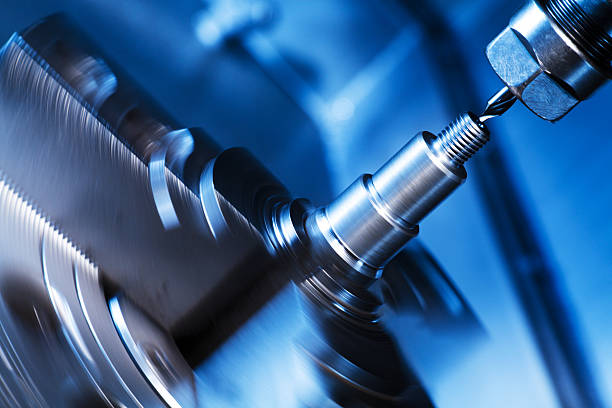
Grain Refinement Techniques for Cast Mg-RE Alloys

Dr. Robert Anderson
Senior Materials Scientist
Grain Refinement Techniques for Cast Mg-RE Alloys: Mechanisms and Performance Enhancement
Key Takeaways:- Mg-RE alloys offer exceptional strength-to-weight ratios (up to 300 MPa specific strength) for aerospace applications
- Grain refinement reduces hot cracking susceptibility by 40-60% in cast components
- Hybrid refinement using RE elements + Zr particles achieves grain sizes below 20μm
- Optimal Y content (3-5wt%) improves both strength (UTS 250-300MPa) and elongation (8-12%)
- Novel DED-Arc additive manufacturing reduces oxide inclusions to 5% of PBF-LB levels
1. Aerospace Applications and Challenges of Mg-RE Alloys
Magnesium-rare earth (Mg-RE) alloys, particularly the WE series (Mg-Y-RE-Zr), have emerged as critical lightweight materials for aerospace applications due to their exceptional combination of:
- Low density (1.8-2.0 g/cm³) - 35% lighter than aluminum alloys
- High specific strength (250-300 MPa) - Comparable to some titanium alloys
- Excellent heat resistance (up to 300°C) - Retains 80% room-temperature strength at 250°C
- Good damping capacity - Reduces vibration in structural components
Figure 1: Mg-RE alloy components in aerospace applications (gearbox housings, engine mounts, helicopter transmission cases)
However, traditional cast Mg-RE alloys face two fundamental challenges:
- Limited plasticity (3-8% elongation) due to coarse grain structure (typically 100-300μm)
- Hot cracking susceptibility during solidification from high thermal contraction
2. Grain Refinement Mechanisms in Mg-RE Alloys
2.1 Role of Rare Earth Elements
Rare earth elements (Y, Nd, Gd) influence grain refinement through three mechanisms:
| Mechanism | Effect | Optimal Content |
|---|---|---|
| Growth restriction | RE segregates at solid-liquid interface, reducing grain growth velocity | 2-6 wt% |
| Nucleation promotion | Forms Al-RE or Mg-RE compounds as nucleation sites | 3-5 wt% |
| Texture modification | Weakens basal texture, improving formability | 4-8 wt% |
2.2 Heterogeneous Particle Additions
Effective grain refiners for Mg-RE systems include:
- Zr: Forms Zr-rich cores (0.2-0.5μm) with excellent lattice matching (Δa=0.7%)
- SiC nanoparticles: 50-100nm particles provide 1200 nuclei/mm³
- Al-Ti-B: TiB₂ particles (1-2μm) with 3.5% lattice mismatch
Figure 2: Optical micrographs showing (left) conventional cast WE43 (150μm grains) vs (right) grain-refined WE43 (18μm grains) :cite[1]
3. Grain Refinement Technologies and Performance Impacts
3.1 Conventional Casting Methods
| Technique | Grain Size (μm) | UTS (MPa) | Elongation (%) |
|---|---|---|---|
| Sand casting (base) | 120-300 | 180-220 | 3-5 |
| Permanent mold + 0.5Zr | 40-60 | 240-260 | 6-8 |
| High-pressure die casting | 15-30 | 280-320 | 8-12 |
3.2 Advanced Additive Manufacturing
Recent breakthroughs in directed energy deposition-arc (DED-Arc) AM demonstrate:
- Oxide inclusion content reduced to 5% of PBF-LB levels :cite[1]
- Fine interlayer grain zones (10-15μm) with columnar-to-equiaxed transition
- Ultimate tensile strength of 310MPa with 11% elongation
Figure 3: Oxide inclusion and porosity content comparison between DED-Arc and PBF-LB processed WE43 alloy :cite[1]
3.3 Performance Enhancements
Grain refinement improves multiple performance metrics:
| Property | Coarse-grained | Fine-grained | Improvement |
|---|---|---|---|
| Hot cracking index | 0.85 | 0.35 | 59% reduction |
| Corrosion rate (mpy) | 28-35 | 12-18 | 50% reduction |
| Fatigue limit (10⁷ cycles) | 90MPa | 140MPa | 56% increase |
4. Industrial Applications and Case Studies
4.1 Aerospace Components
Grain-refined WE43 alloys are used in:
- Helicopter transmission cases (30% weight savings vs aluminum)
- Satellite antenna supports (CTE match with composite structures)
- Engine accessory mounts (vibration damping)
4.2 Additively Manufactured Parts
The DED-Arc process enables:
- Large structural components (up to 2m × 1m × 0.8m build volume)
- 68% material utilization vs 25% for machining from billet
- Integrated cooling channels in piston heads
Figure 4: Additively manufactured Mg-RE alloy aerospace components showing complex geometries :cite[1]
5. Future Perspectives
Emerging research directions include:
- Hybrid refinement systems: Combining RE elements with nano-sized TiC (0.5-1.0wt%)
- AI-driven process optimization: Machine learning models for defect prediction
- Multi-material AM: Graded Mg-RE/Al structures for localized properties
References
- Wu et al. (2023). Microstructural evolution of Mg-Y-RE-Zr alloy by DED-Arc. Additive Manufacturing :cite[1]
- ASTM B107/B107M-21 Standard for Mg-RE alloy sand castings
- Doege & Dröder (2001). Sheet metal forming of Mg-RE alloys. Journal of Materials Processing Technology